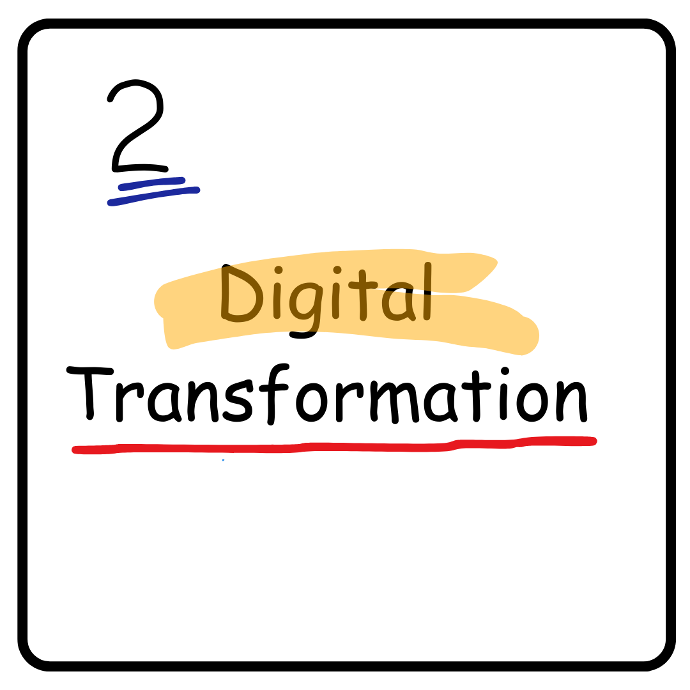End-to-End Digital Transformation Services
With servral years of experience in IT, ITSS Global helps businesses across 30+ industries modernize their legacy systems, introduce process automation, and reach new heights with the help of advanced technology. Knowing the value of risk management in DT, we carry out targeted, sustainable innovations in business-critical areas and maintain strict budget control.

When Is It Time for Digital Transformation?
A recent survey has revealed that 9 in 10 leaders and C-level executives have embarked on at least one digital transformation project in the past two years. What prompts businesses to kick off DT?
Outdated legacy systems
Legacy systems get progressively harder to scale and update over time, accumulating technical debt. The resulting low performance and growing security concerns turn this from an inconvenience into a critical business risk.
Inefficient processes
Manual business and IT processes are slow, error-prone, and tedious for the involved teams, leading to suboptimal results. Without efficient automation, the gap between established routines and expected outcomes becomes impossible to breach.
Intense competition
Market competitors leverage modern technology to operate faster, serve customers better, and win new markets. Without a solid digital strategy to support your unique proposition, it’s hard not to lag behind.
Data out of control
Digitalized processes accumulate more and more data each day, but with manual data management and siloed storage, it doesn’t reach analytics in time to have a meaningful impact on decision-making.
How We Unfold Digital Transformation
Digital transformation is the revision and evolution of a company’s technology environment with the goal of improving business performance metrics. At ITSS-Global, we manage large-scale projects effectively by bringing clear structure and organization to the process while leaving space for tuning our framework to each unique project.
1
In-depth investigation of the current business state
At this step, we:
- Get an overall business picture: size, geographical presence, major processes, business model(s), product/service lines, supply chains, finance.
- Find out business goals and a planned roadmap for further company development. As the vision of different stakeholders may differ, we consolidate the opinions and ultimately advise on how the strategy may be tuned in view of digital transformation.
- Define business areas subject to transformation and study them thoroughly using business process assessment, interviews, problems/goals decomposition, value stream mapping.
-
Identify areas of waste:
- Time and energy waste for manual, repetitive, excessive activities.
- Defects in end products or processes and costs associated with their correction.
- Irrational use of assets or space.
- Miscommunication, poorly coordinated activities between employees.
- Wasted data.
2
Digital transformation strategy
At this step, we:
- Set up long-term digital transformation goals.
- Prioritize goals based on the expected impact and urgency.
- Plan a sequence of manageable initiatives taken to achieve the goals.
- Appraise each initiative in terms of cost, time, and manpower requirements.
3
Digital transformation implementation
We help with:
- IT infrastructure transformation to reduce costs and enable technology-driven innovation.
- Implementation of new software aimed to bring the required improvements to business processes.
- Transformation of existing software solutions to align them with the current business needs, make more maintainable and user-friendly.
- Integration of business systems internally and with third-party apps and services.
- Setup of data analytics of the required complexity, from descriptive data analysis to data science.
- Digital testing tailored specifically to digital transformation projects and covering end-to-end functional, integration, performance, security, usability, and data migration testing.
4
Risk mitigation
Throughout the entire digital transformation, we control the risks of:
- Operational complexity to prevent user-unfriendliness in apps or overcomplicated processes hard to adopt.
- Unresponsiveness or lagging performance of business apps caused by improper architecture.
- Vulnerabilities in a cybersecurity system.
- Data leakage or data confidentiality breaches.
- Non-compliance of digital solutions with sectoral regulations.
- Cost and time overruns.
5
Program and project management
We concert all the activities planned for digital transformation and help:
- Coordinate multiple autonomous teams.
- Manage the costs and achieve maximum business value for the given budget.
- Establish the practice of continuous integration and continuous deployment (CI/CD).
- Manage delivery deadlines and mitigate possible delays.
- Report on the digital transformation progress.
- Tune the digital transformation strategy amid the implementation in case of altering circumstances.